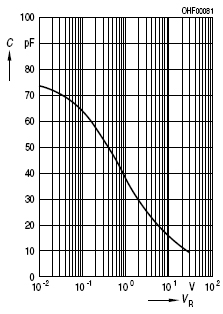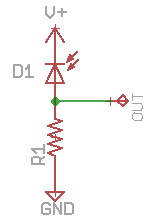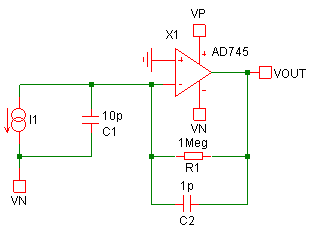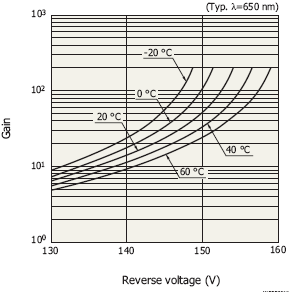A common sensor requirement is to measure light. This may be for adjusting the brightness of a display or for instrumentation where accuracy is of importance and light levels could be very low. The light could be relatively constant or slowly changing, or it could be modulated at high speed. There are a number of sensor possibilities, including devices with built in digital interfaces but I will look as the basic devices here rather than integrated detectors with processing electronics.
Light dependent resistor (LDR)
The use of LDRs has largely disappeared due to the use of cadmium in many of them so I will ignore them!
Photodiode
The most common photodetector consists of a light sensitive PN junction. In fact most PN junctions (such as in transistors or diodes) are light sensitive, it is just that they are usually covered by the packaging otherwise it would adversely affect the operation of the circuitry. Photodiodes can be PN or PIN type. PIN is P-Intrinsic-N which has an additional undoped intrinsic semiconductor layer between the P and N types. This generally improves the speed of the photodiode compared to the PN type.
Photodiodes can be used as photovoltaic devices or current sources (when reverse biased). A photovoltaic device generates a voltage from the incident light – a solar cell. When used reverse biased the current is controlled by the incident light. Reverse biasing reduces the capacitance of the photodiode which is useful when you need high speed. For example, the Osram BPW34 has 72pF of capacitance at zero bias and only 10pF at 30V reverse bias, as shown below.

You need to ensure that any subsequent circuitry can withstand the higher voltage or is protected from it. To use a photodiode in this way you could simply use a resistor connected to a 30V power supply with the photodiode connected the appropriate way round and measure the signal across the resistor.

This is often not ideal because to get reasonable sensitivity you will need a high resistance and that combined with the capacitance will make for a very slow system response, particularly if the resistance is several megaohms.
A more common circuit for instrumentation would be a transimpedance amplifier (TIA). This is a current to voltage converter which is exactly what the resistor is in the circuit above. However, a TIA presents a low impedance to the photodiode even when the current to voltage conversion ratio is very high. For example, the circuit below presents just 0.25 ohms to the photodiode while giving 1M ohm transimpedance (current to voltage conversion ratio).

C1 in this case represents the photodiode capacitance with the photodiode represented by the current source. The leakage or dark current is not shown.
Avalanche photodiode (APD)
An avalanche photodiode is a specialized photodiode which provides amplification of the photocurrent within the actual photodiode before you even connect it to your amplifier or resistive load. This is very useful for extremely low level signals and can give you a factor of 100 or more improvement in the signal to noise ratio compared to a normal photodiode. The disadvantage, apart from cost, is that they need a high voltage to operate – up to 500V – and the “magnification” depends on operating voltage, and they need to be operated very close to reverse breakdown for high magnification. The breakdown voltage is not fixed but varies significantly with temperature. Dealing with these issues adds more cost and complexity to the system. However, in systems where the signal is lower than the noise with a conventional photodiode they make the difference between a system that will work and one that won’t.

The gain versus reverse voltage for a typical Hamamatsu APD is shown above. One important point worth noting is that there is “excess noise” which increases the noise within the photodiode above the increase in signal for a given gain (or magnification) so the optimum gain is not necessarily the highest possible, particularly if there is a constant light level with a small modulated signal superimposed on it. The constant light, which could be from ambient or stray light, increases the noise even when there is no modulated signal present. In such cases you may find the optimum gain is only 10 to 30.
Photomultiplier tubes
A specialized device with even higher gain than an APD but requiring higher voltages and with higher cost. They are quite old fashioned “vacuum tube” devices but still have their place where signals are very low e.g. a pico Watt or less.
Other detectors
There are other photodetectors for specialized applications such as single photon APDs (SAPDs) and microchannel plates.
Silicon, InGaAs or other materials
Semiconductor photodetectors are made with a variety of materials. Silicon is the most common for near infra-red to ultraviolet (UV) detection, including the visible region. InGaAs would be typical for longer wavelengths of 1100nm to 1600nm such as in high speed fiber optic communication. For even longer wavelengths, more complex (and expensive) materials are used. Silicon is the cheapest and most common with blue and UV enhanced versions available at a higher cost.


Leave a Reply